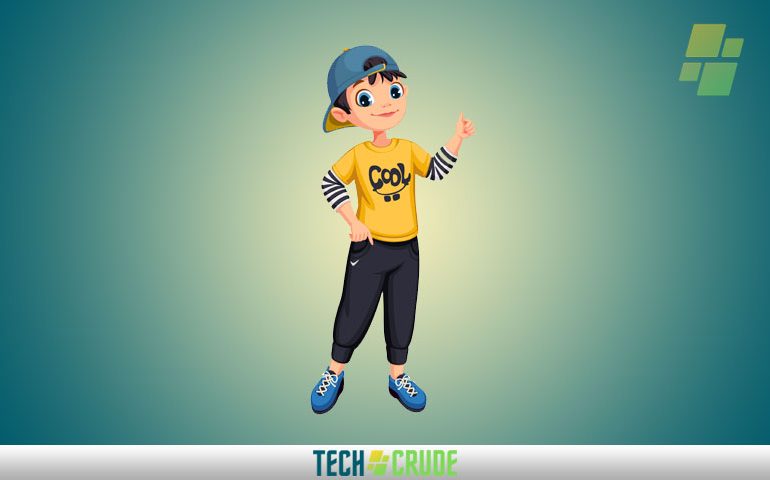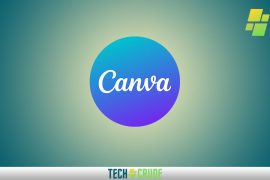To do animation for beginners, start by choosing a software and learning the basic tools and techniques. Then practice creating simple animations to build your skills and develop your own style.
Animation is a captivating medium, allowing artists to bring their creations to life in new and exciting ways. For beginners, the world of animation can seem daunting, with a multitude of software options and techniques to choose from. But with practice and dedication, anyone can learn how to create engaging and compelling animations.
In this article, we’ll explore some tips and tricks for getting started in animation, including how to choose software, master basic techniques, and develop your own unique style. So if you’re ready to bring your ideas to life, let’s dive in and learn how to do animation for beginners.
The History Of Animation
A Short History Of Animation And Its Evolution
Animation as an art form has been around for over a century and has evolved tremendously since its inception. Here are some key points about the history and evolution of animation:
- Animation started with hand-drawn images that were photographed in sequence to create a moving picture.
- French artist emile cohl created the first animated film in 1908, titled “fantasmagorie“.
- Disney’s snow white and the seven dwarfs, released in 1937, was the first full-length animated feature film.
- The advent of computer technology in the 1990s revolutionized animation by allowing for more realistic and complex imagery.
- Today, animation encompasses a wide array of styles and techniques, from hand-drawn to computer-generated images.
The Pioneers Of Animation
Many individuals have made significant contributions to the world of animation over the years. Here are some of the pioneers of animation:
- Winsor mccay was an early pioneer of animation and created the iconic “gertie the dinosaur” cartoon in 1914.
- Walt disney is undoubtedly one of the most well-known and influential animators of all time, responsible for creating beloved characters like mickey mouse and donald duck.
- Chuck jones was a director at warner bros. who played a pivotal role in developing the character of bugs bunny.
- Hayao miyazaki is a japanese animator and filmmaker who co-founded studio ghibli and created films like spirited away and my neighbor totoro.
How Technology Has Transformed Animation
Technology has played a significant role in the evolution of animation, making it more accessible, efficient, and visually stunning. Here are some ways technology has transformed animation:
- Computer animation has allowed for more precise control over movement and more complex imagery.
- Motion capture technology has made it easier to create realistic movements for animated characters.
- Virtual reality technology is now being used to create immersive animated experiences.
- Cloud-based systems have made it easier for animation studios to collaborate and work remotely.
Animation has come a long way since its early days and continues to evolve with advancements in technology. The contributions of many talented pioneers have helped shape the medium into the art form it is today.
Understanding The Principles Of Animation
Overview Of The Fundamental Principles Of Animation
Animation is the art of bringing still images to life. It is the process of creating an illusion of motion to make an object or character seem alive. Understanding the principles of animation is the first step to creating successful animation.
Here are some of the fundamental principles of animation:
- Squash and stretch: This principle adds a sense of weight and flexibility to an object. Objects appear to stretch when they move in one direction and squash when they change direction.
- Timing: Timing is the foundation of animation. The timing of an animation determines the speed and rhythm of the movement.
- Anticipation: Anticipation is used to prepare the audience for the main action. For example, the animation of a running man might start with him leaning back before he takes off.
- Follow-through and overlapping action: This principle describes how different parts of an object move separately. For example, a character’s hair might move independently from its head.
- Arcs: Arcs are used to create natural movement. Almost all movements follow an arc, such as the movement of a swinging pendulum.
Examples Of How To Apply These Principles In Animation
Now that we know some of the fundamental principles of animation, let’s take a look at how to apply them when animating. Here are some examples:
- If you are animating a character running, you can use the squash and stretch principle to make the character’s body shift its shape as it moves. This can make the character look more dynamic and realistic.
- Anticipation can be used to make sudden movements seem more natural. For example, a character might crouch before jumping in the air.
- Follow-through and overlapping action can be used to create more realistic movement. For example, a character’s hair might move slightly even after they stop moving.
- Arcs can be used to make movements seem more natural. For example, when a character throws a ball, the movement of the arm would naturally follow an arc.
Tips For Using Timing And Spacing In Animation
Timing and spacing are crucial elements of animation. They help convey the weight, speed, and rhythm of movement. Here are some tips for using timing and spacing in animation:
- Start by creating a rough sketch of your animation and experimenting with different timing options. This will help you decide on the best timing for your animation.
- Use onion-skinning to see multiple frames at once and to help with making decisions about spacing.
- Pay attention to the spacing between keyframes. Adjusting spacing can change the speed and weight of your animation.
- Use the 12 principles of animation as a guide. Experiment with different principles to add more life to your animation.
Remember, practice is key when it comes to animation. The more you experiment with the principles of animation, the better your animations will become.
Basic Animation Techniques
Animation is a fascinating and challenging art that can be learned regardless of age or skill level. In this section, we’ll explore the basic animation techniques that every beginner should master before moving on to more complex animations. Here are the key points you need to remember:
Explanation and demonstration of basic animation techniques:
- Animation is the art of bringing still images to life by moving them in a sequence.
- The most basic animation technique is hand-drawn animation, where you draw each frame by hand.
- Stop-motion animation involves capturing a series of still frames and then playing them in sequence.
- Computer animation involves creating animations using software, such as 2d animation or 3d animation.
Step-by-step guide on how to create your first animation:
Here’s a step-by-step guide on how to create your first animation:
- Decide what you want to animate: A bouncing ball, a character walking, or anything else that you find interesting.
- Draw or create each frame of your animation.
- Put the frames in sequence.
- Play the frames in sequence to see your animation in action.
- Repeat the process until you attain the desired level of smoothness and flow.
Best software and tools for beginners:
As a beginner, you don’t have to break the bank to get started. Here are some free or budget-friendly software and tools that you can try:
- Blender: A free, open-source software for 3d animation.
- Pencil2d: A free 2d animation software.
- Synfig studio: A free vector-based animation software.
- Animaker: A browser-based animation tool with a free and premium version.
- Powtoon: A browser-based animation software with a free and paid version.
Now that you know the basic animation techniques, have a step-by-step guide on how to create your first animation and the best software and tools to use, it’s time to get started! Keep practicing, and you’ll be amazed at the countless possibilities of animation.
Types Of Animation
Overview Of The Different Types Of Animation, Including 2D, 3D, Stop-Motion, And More
Animation is a creative way to bring artwork to life by creating an illusion of motion and change over time. There are different types of animation, from hand-drawn to computer-generated, and each offers unique visual effects. Here are some of the different types of animation:
- 2d animation: This traditional type of animation is based on creating a series of hand-drawn images that are compiled to create the illusion of movement. It is the most common form of animation and is widely used in tv shows and movies.
- 3d animation: Unlike 2d animation, 3d animation is created using computer software. It involves creating 3d models and placing them in a virtual environment, creating an illusion of depth and space. It is often used in video games, movies, and tv shows.
- Stop-motion animation: This form of animation requires physically manipulating real-life objects and capturing them on film one frame at a time. The frames are then compiled to create the illusion of movement.
- Motion graphics: This type of animation involves creating animated graphics for informational or marketing purposes. It is often used in commercials, explainer videos, and presentations.
- Cut-out animation: Cut-out animation involves creating characters and objects from pre-made parts, such as limbs and bodies, and animating them digitally.
Advantages And Disadvantages Of Each Type Of Animation
Different types of animations have their advantages and disadvantages based on the medium, purpose, and budget. Here are a few pros and cons of each type:
- 2d animation:
- Advantages: Cost-effective, quicker turn-around time, easy to produce, traditional look and feel
- Disadvantages: Limited depth and detail, less visually rich, can look outdated
- 3d animation:
- Advantages: Visually appealing, offers added depth, can create realistic environments, more adaptable to multiple formats
- Disadvantages: Higher production cost, longer turn-around time, requires advanced software and technical skills
- Stop-motion animation:
- Advantages: Tactile and hands-on, unique style, captures real-life movements, offers realistic look and feel
- Disadvantages: Time-consuming, requires patience and attention to detail, limited freedom of movement, higher production cost
- Motion graphics:
- Advantages: Efficient, cost-effective, easily customizable, visually appealing, can explain complex information
- Disadvantages: Limited narrative potential, less visually rich compared to other forms of animation
- Cut-out animation:
- Advantages: Efficient, cost-effective, easy to replicate, offers unique style and aesthetic
- Disadvantages: Limited movement, less details, less flexibility
Examples Of Popular Animation Styles In Films And Tv Shows
Animated films and tv shows offer a wide range of animation styles and techniques. Here are some examples of popular animation styles:
- Hand-drawn animation: Classics like “the lion king” and “beauty and the beast” are perfect examples of hand-drawn animation style. This approach is known for its rich details and fluidity of motion.
- 3d animation: “toy story,” “finding nemo,” and “the incredibles” are popular examples of 3d animation style. This approach offers rich details and depth, allowing artists to create intricate and realistic animations.
- Stop-motion animation: “coraline,” “the nightmare before christmas,” and “chicken run” are all examples of stop-motion animation style. This approach offers a unique look and feel that stands out from other animation styles.
- Motion graphics: Videos like ted talks and explainer videos often use motion graphics to convey information in a visually engaging manner.
- Cut-out animation: Southpark and paper mario are popular examples of cut-out animation style. This animation type is perfect for creating non-realistic, cartoonish visuals.
When it comes to animation, there are different types of styles to choose from. Each has its own advantages and disadvantages, and artists should be aware of them before selecting the appropriate style for their work. By considering these aspects, animators can create unique and appealing animations that stand out among others.
Creating An Animation Portfolio
Tips For Creating An Animation Portfolio That Showcases Your Skills And Style
When it comes to creating an animation portfolio that stands out from the crowd, there are a few crucial elements you’ll want to include to showcase your skills and style. Here are some tips to help you create a standout animation portfolio:
- Start with a clear and concise introduction that highlights your strengths and unique style as an animator.
- Showcase your best work first, as this is often the first impression a potential employer or client will have of your skills and abilities. Organize your work in a clear and visually appealing way, making it easy for viewers to navigate and understand.
- Be sure to include a variety of different animation styles, techniques and mediums to demonstrate your versatility and range as an animator.
- Highlight your technical abilities by providing detailed explanations of the tools and software you’ve used to create your work. Consider creating process breakdowns or tutorials to show off your skills in action.
- Take time to carefully curate your portfolio, selecting only your best and most impressive work. Remember, quality over quantity is key.
- Finally, don’t be afraid to get creative with your portfolio design – it’s a chance to showcase not only your animation skills but also your overall design sense and branding.
Examples Of Successful Animation Portfolios
Looking for inspiration? Here are a few examples of animation portfolios that have caught our eye:
- Rachel reid’s portfolio showcases a variety of styles and techniques, from 2d hand-drawn animation to 3d modeling and rigging. Her vibrant color palettes and whimsical characters are sure to capture the attention of any viewer.
- Michael omondi’s portfolio is a great example of a minimalist design that allows his work to really shine. His use of bold, contrasting colors and smooth, fluid animation is both eye-catching and captivating.
- Molly d’ambrosio’s portfolio features a range of animation styles, from 2d frame-by-frame animation to stop-motion and claymation. Her use of quirky characters and clever storytelling is sure to leave a lasting impression.
How To Network And Get Involved In The Animation Industry
Networking and getting involved in the animation industry is a great way to enhance your skills, make connections, and potentially secure new freelance or job opportunities. Here are a few tips to help you get started:
- Attend industry events and conferences, such as animation festivals or studio open houses, to meet other professionals in the field and gain insights into new trends and techniques.
- Join online communities and discussion forums for animators, such as reddit’s /r/animation or the animation career review forum. This can be a great place to ask questions, get feedback on your work, and connect with other animators and industry professionals.
- Consider taking additional classes or workshops to build new skills and expand your portfolio. This can also be a great place to meet other students and professionals in the field.
- Finally, be sure to follow industry professionals and studios on social media, engage with their content, and share your own work. This can be a great way to get noticed and potentially attract new clients or job offers.
People Also Like: Secure Your Mobile with These Top VPN Apps for Android & iOS
FAQs
What Are The Basic Requirements For Animation?
To start animating, you need a computer, software, drawing tablet, and creativity.
How Long Does It Take To Learn Animation?
The duration depends on the complexity of the animation. Simple animations can take a week, such as bouncing balls, while more complex animations can take months or even years.
What Is The Best Way To Learn Animation?
The best way to learn animation is through an online course, attending animation schools, reading books, watching tutorials, and consistent practice.
Conclusion
Mastering animation requires a lot of practice, dedication, and patience, but don’t let these obstacles discourage you from pursuing your dream. With the right resources and techniques, anyone can learn how to do animation for beginners. By understanding the foundational principles and applying them to your work, you can create stunning animations that impress your audience.
Remember to start small, take it step by step, and always seek feedback from others. Whether you’re using 2d or 3d animation software, experimenting with different styles and techniques can help you develop a unique style that sets you apart from others.
With hard work and perseverance, the world of animation is yours to explore and conquer. So, roll up your sleeves, take on the challenges, and unleash your creativity!



